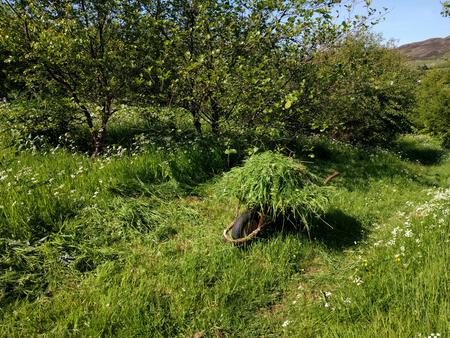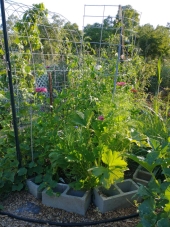
 12
12




Invasive plants are Earth's way of insisting we notice her medicines. Stephen Herrod Buhner
Everyone learns what works by learning what doesn't work. Stephen Herrod Buhner
 8
8




John Daley Bendigo, Australia The Enemy of progress is the hope of a perfect plan
Benefits of rainfall collection https://permies.com/t/88043/benefits-rainfall-collection
GOOD DEBT/ BAD DEBT https://permies.com/t/179218/mortgages-good-debt-bad-debt

 7
7





How Permies works: https://permies.com/wiki/34193/permies-works-links-threads
My projects on Skye: The tree field, Growing and landracing, perennial polycultures, "Don't dream it - be it! "
 2
2




Invasive plants are Earth's way of insisting we notice her medicines. Stephen Herrod Buhner
Everyone learns what works by learning what doesn't work. Stephen Herrod Buhner
 4
4




Do, there is no try --- Yoda
No one is interested in something you didn't do--- Gord Downie
 3
3




Invasive plants are Earth's way of insisting we notice her medicines. Stephen Herrod Buhner
Everyone learns what works by learning what doesn't work. Stephen Herrod Buhner
 1
1




Do, there is no try --- Yoda
No one is interested in something you didn't do--- Gord Downie
 8
8




 5
5




 1
1




Invasive plants are Earth's way of insisting we notice her medicines. Stephen Herrod Buhner
Everyone learns what works by learning what doesn't work. Stephen Herrod Buhner
 4
4




 4
4




Life on a farm is a school of patience; you can't hurry the crops or make an ox in two days.
Henri Alain
 3
3




William Bronson wrote:
I bury garbage picked potatoes in my beds, allow them to grow and then allow them to be killed by frost.
Any root, tuber or bulb you find in a dumpster could be used this way.
We process and eat most of the the onions we find , but the rest gets planted.
 1
1




 1
1








 1
1




William Bronson wrote:Hey Mart, do you feed your fish any aquatic plants?
Life on a farm is a school of patience; you can't hurry the crops or make an ox in two days.
Henri Alain
 3
3




With blessings, always

 2
2




- Tim's Homestead Journal - Purchase a copy of Building a Better World in Your Backyard - Purchase 6 Decks of Permaculture Cards -
- Purchase 12x Decks of Permaculture Cards - Purchase a copy of the SKIP Book - Purchase 12x copies of Building a Better World in your Backyard
 3
3




Timothy Norton wrote:I am learning that anything can become fertilizer.
 1
1




Mike Philips wrote:soil health principles:
1) “armor on the soil” (mulch, plant residue)
2) “no till”. (minimal/optimal soil disturbance after initial bed prep);
3) diversity of plants;
4) “Keep a living root”. (continual live plant/foot, perennials or cover crops alternated with annual crops);
5) livestock integration
Garden Master Program video course and ebook guide

|
look out! This tiny ad has a whip!
The new kickstarter is now live!
https://www.kickstarter.com/projects/paulwheaton/garden-cards
|







